Exploring Al Kubra Tower: Architectural Landmark in Dubai
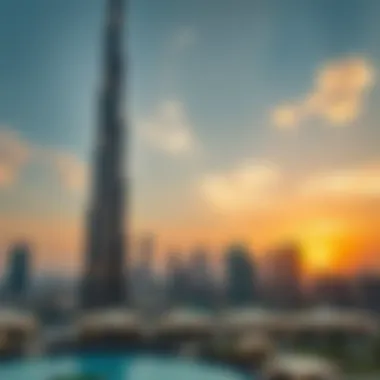
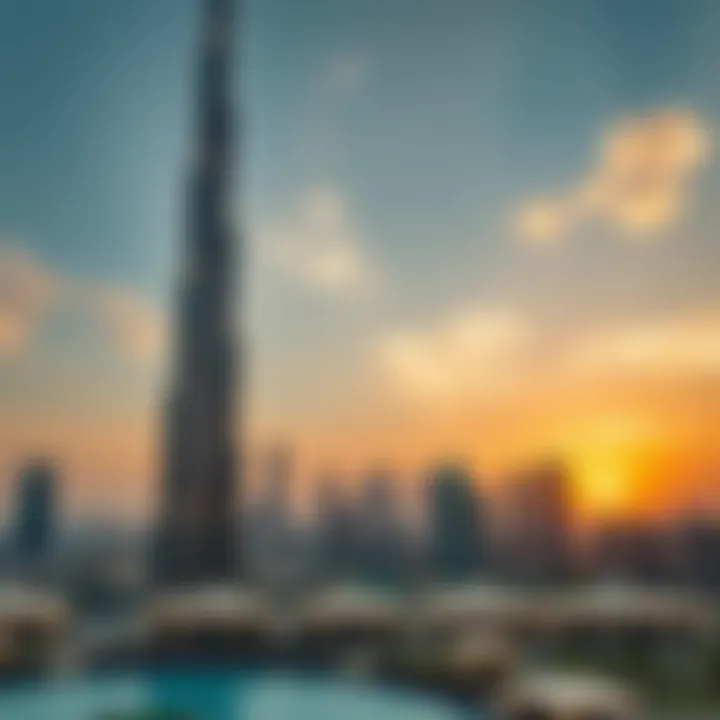
Intro
Al Kubra Tower stands tall amidst the ever-evolving skyline of Dubai, representing not just an architectural feat, but a symbol of the city's rapid ascent in the global real estate market. Recognized for its unique design and strategic location, the tower plays a pivotal role in the urban landscape and economic growth of this vibrant metropolis.
Nestled within a thriving area, its grandeur draws in investors, property enthusiasts, and tourists alike who are captivated by both its aesthetic brilliance and functional utility. This article aims to shed light on the intricacies of Al Kubra Tower; explore its architectural significance, historical context, and burgeoning impact on both the property market and overall urban development in Dubai.
As Dubai continues to emerge as a global hub for business and tourism, understanding landmarks like Al Kubra Tower becomes essential for grasping the broader trends of its competitive, yet lucrative real estate landscape.
Industry Insights
Current Market Trends
The Dubai real estate market has witnessed shifts that reflect the economic pulse of the region. With the recent uptick in foreign investments, the interest in properties like Al Kubra Tower has surged. Factors such as the government's initiatives to attract expatriates and investors play a significant role. Special economic zones, tax incentives, and streamlined regulations have fostered an environment ripe for investment.
In recent months, there has been a noticeable inclination towards luxury properties. Al Kubra Tower, with its premium offerings, has positioned itself to capitalize on this trend. Its strategic location near major transport links and business districts ensures that property values remain robust.
Economic Factors Influencing Real Estate
The economic backdrop of Dubai affects real estate dynamics heavily. A few key elements include:
- Oil Prices: Fluctuations in oil prices have direct implications on economic growth and, consequently, the property market.
- Tourism: Dubai's status as a tourist hotspot continually bodes well for real estate demand. Major events and festivals draw visitors who seek quality accommodations.
- Global Economic Conditions: Events such as the pandemic can temporarily shift market trends but have historically contributed to a resilient recovery.
Well-structured projects like Al Kubra Tower embody these dynamics, blending aesthetic appeal with practical investment opportunities.
"Investing in landmarks like Al Kubra Tower is not just about real estate; it’s a gateway into the very soul of Dubai’s spicy culture and aspirations."
Investment Strategies
Tips for First-Time Investors
Navigating the Dubai real estate market, particularly with notable properties such as Al Kubra Tower, requires savvy and awareness. Some pointers for first-timers include:
- Research: Understanding local market insights can demystify trends and guide better decision-making.
- Networking: Connecting with local agents and investors can reveal opportunities that may not be noticeable at first glance.
- Legal Guidance: Grasping the legal aspects of property ownership in the UAE is essential to avoid pitfalls.
Risk Assessment and Mitigation
Every investment carries risk, and real estate is no exception. Being prepared can help mitigate potential pitfalls. Some risk factors to consider include:
- Market Fluctuations: The real estate market can be volatile. Having a diversified portfolio can help spread risk.
- Regulatory Changes: Staying updated on local laws and changes in property ownership regulations is vital.
- Economic Uncertainty: Global economic conditions can affect property values. Investors should have contingency plans.
Understanding these dynamics will not only enhance investment decisions but could potentially maximize returns, making interactions with properties like Al Kubra Tower more fruitful.
As Dubai continues to progress, the insights gained from exploring its iconic structures may help illuminate the path forward for both seasoned investors and newcomers looking to stake their claim in this ever-changing landscape.
Intro to Al Kubra Tower
Al Kubra Tower isn’t just another tall structure dotting Dubai's skyline; it stands as a hallmark of innovative architecture and urban ambition. In the ever-evolving narrative of Dubai, this tower encapsulates more than mere aesthetics; it weaves together the principles of modern design with the rich cultural tapestry that characterizes the city. Understanding the significance of Al Kubra Tower is crucial for anyone navigating the remarkable landscape of Dubai’s real estate and architectural vision.
Firstly, the architectural brilliance of the tower invites admiration and inquiry. Al Kubra Tower showcases a blend of contemporary design and practical functionality, serving as a beacon of modernity amidst a backdrop of historical richness. This tower not only signifies the heights that architects and developers can reach in expressing creativity but also highlights the bold aspirations of a city that never sleeps.
Moreover, the tower's construction and subsequent presence have implications for the local real estate market and urban development. With Dubai being a magnet for investment and expatriates, Al Kubra Tower represents not just a building, but a symbol of opportunity and growth. The very presence of such a landmark influences property values, attracts business ventures, and invites conversations about sustainability and future urban planning in one of the world's fastest-growing cities.
Investors, analysts, and expatriates alike look toward structures like Al Kubra Tower, keen on gleaning insights into market trends and cultural implications. The significance of the tower extends beyond its physical form—it encapsulates the pulse of Dubai itself, echoing the ambitions of those who seek a blend of tradition and futurism in one of the world’s most dynamic environments.
In essence, immersing oneself into the story of Al Kubra Tower provides profound insights into architectural design, investment opportunities, and cultural harmony within Dubai. Through careful examination of this structure, one grasps the larger narrative of a city synonymous with luxury and innovation.
Historical Context
Understanding the historical context of Al Kubra Tower lends valuable insight into its significance as a cornerstone of Dubai’s architectural landscape. The foundation of any iconic structure is often rooted in the rich history that surrounds its inception. Al Kubra Tower stands not only as a physical structure but as a representation of Dubai's remarkable transformation over the decades—from a quaint coastal town into a bustling metropolis.
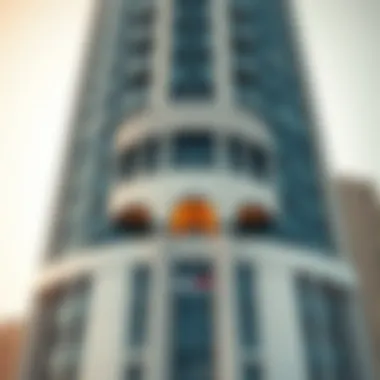
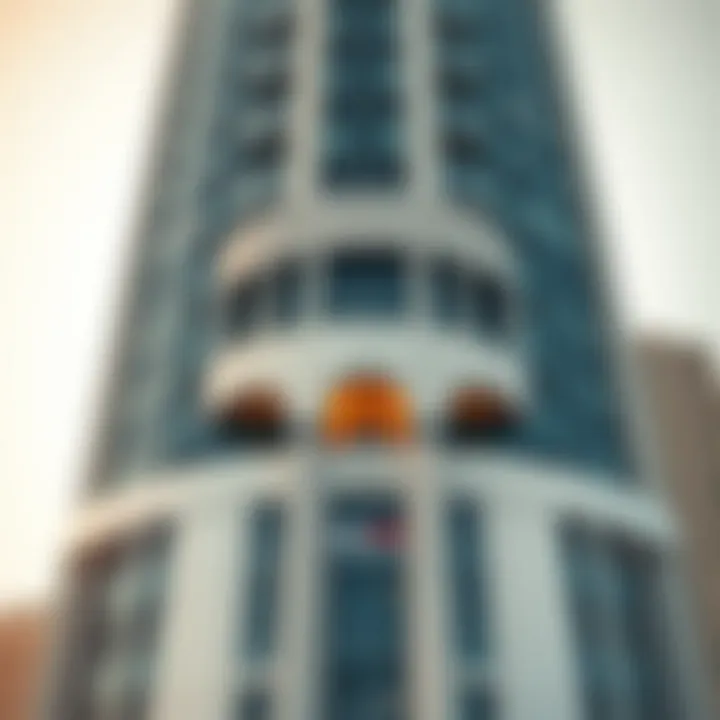
The site's history can be traced back to the early 2000s when Dubai was actively seeking to diversify its economy by investing heavily in infrastructure and tourism. This desire for growth was fueled by oil wealth, which provided the financial backing necessary for ambitious projects, including Al Kubra Tower. As the skyline evolved, the tower came to symbolize Dubai's aspiration for modernity and innovation in architectural design.
A well-rounded exploration of this context necessitates an examination of key elements crucial to Al Kubra Tower's development:
- Economic Growth: As tourism flourished and global investors flocked to Dubai, real estate thrived. The need for structures like Al Kubra Tower became evident.
- Cultural Identity: The tower has merged traditional and contemporary influences, encapsulating the essence of Emirati culture while embracing modern architectural trends.
- Urban Development: Al Kubra Tower is part of a larger narrative—influencing the urban planning strategies that have become synonymous with Dubai's rapid growth.
Thus, the historical context is not merely about dates and events. Instead, it encompasses the socio-economic shifts that breathed life into Al Kubra Tower, making it a hallmark of Dubai’s unyielding ambition.
Timeline of Development
Al Kubra Tower's timeline portrays a narrative of aspiration and achievement. Here’s a succinct chronology that marks its journey from concept to completion:
- 2002: Proposal and initial design phases began, led by a coalition of visionary architects and stakeholders.
- 2004: Groundbreaking ceremony, signaling the start of construction amidst rising investments in the region's real estate market.
- 2008: Key challenges emerged amid the global financial crisis, yet the project persevered through innovative funding solutions.
- 2011: Structural completion occurred, positioning Al Kubra Tower as an emerging symbol of Dubai’s skyline.
- 2013: Official inauguration, with thousands attending to celebrate the opening of a landmark that would draw tourists and investors alike.
This timeline reflects more than mere dates; it underscores the inherent tenacity and adaptability that characterize Dubai’s growth story.
Architectural Influences
The architectural influences behind Al Kubra Tower are a blend of diverse styles and ideologies. The structure incorporates local traditions while simultaneously pulling inspiration from modern silhouettes seen in global cities. Architects drew from a variety of cultural motifs, yielding a design that captivates and encompasses its environment.
Several distinctive elements define its architectural narrative:
- Postmodern Aesthetics: The tower’s façade features a unique interplay of glass and steel, creating a sleek yet inviting appearance.
- Cultural References: Subtle design cues pay homage to Bedouin architecture, merging the old with the new, echoing the heritage of Dubai.
- Sustainability: An emphasis on environmentally friendly materials and designs integrated into the architecture, aligning with Dubai’s vision for a sustainable future.
To appreciate Al Kubra Tower fully, it is crucial to recognize the architectural dialogue it engages in—both with its historical roots and the modern world. This act of balancing tradition with contemporary innovation is part of what makes Al Kubra Tower emblematic of Dubai's relentless pursuit of greatness.
Architectural Features
When examining Al Kubra Tower, the architectural features stand as the backbone of its identity. They not only define the tower's physical presence but also underline its significance in Dubai's urban landscape. Al Kubra Tower embodies a blend of innovative design, sustainable practices, and state-of-the-art construction techniques, which all come together to showcase the aspirations of modern Dubai.
Design Elements
The design elements of Al Kubra Tower are a testament to the creativity and ambition of its architects. The tower's silhouette is striking; its sweeping curves and angular shapes make it a distinctive part of the skyline. The use of glass facades allows for natural light to flood the interior, creating a sense of openness and connection with the surroundings. Additionally, each floor is designed with an emphasis on functionality, with spaces tailored for offices, residential units, and recreational areas.
Furthermore, the incorporation of outdoor terraces provides not just aesthetic value but also offers residents and office workers a breath of fresh air, quite literally. The thoughtful layout promotes a community atmosphere, making the tower not just a place to work or live, but a place to engage and connect.
Materials Used
The choice of materials in Al Kubra Tower reflects a balance between elegance and durability. High-quality steel and reinforced concrete form the structural core, ensuring the building withstands the rigors of time and weather. The exterior is adorned with advanced glass that minimizes solar heat gain, thus reducing reliance on air conditioning—a win-win for both comfort and energy efficiency.
Moreover, the use of eco-friendly materials in the design showcases the commitment to sustainability that modern developments are aiming for. Even the smallest details, such as the acoustic panels that reduce noise pollution, are selected with care, enhancing the overall environment within the tower. This thoughtful selection of materials resonates well with eco-conscious investors and residents alike.
Sustainability Considerations
Sustainability is not just a buzzword for Al Kubra Tower; it’s a guiding principle in its architectural design. With Dubai’s desert climate, the building incorporates several green technologies.
- Solar panels installed on the roof help in harnessing renewable energy.
- The integration of rainwater harvesting systems contributes to water conservation.
- Strategic landscaping around the tower uses native, drought-resistant plants, reducing the need for extensive irrigation.
Also, Al Kubra Tower was built with a LEED certification trajectory in mind, meaning it aims to fulfill criteria that promote environmental efficiency.
"Architectural excellence in Al Kubra Tower is coupled with a commitment to sustainability, making it a modern marvel in every sense."
Cultural Significance
The Al Kubra Tower stands not just as a feat of engineering or design, but as a cultural landmark deeply intertwined with the identity and aspirations of Dubai. Its presence signifies the relentless journey towards modernity that characterizes the city, making it more than just another skyscraper.
Symbol of Modernity
Emblematic of Dubai’s rapid transformation from a humble fishing town to a bustling metropolis, Al Kubra Tower encapsulates the very essence of this evolution. It reflects the aspirations of a nation that strives to project itself on the global stage. The sleek lines and avant-garde design not only enhance the skyline but also serve as a commentary on the innovation that marks the region’s architectural advancements.

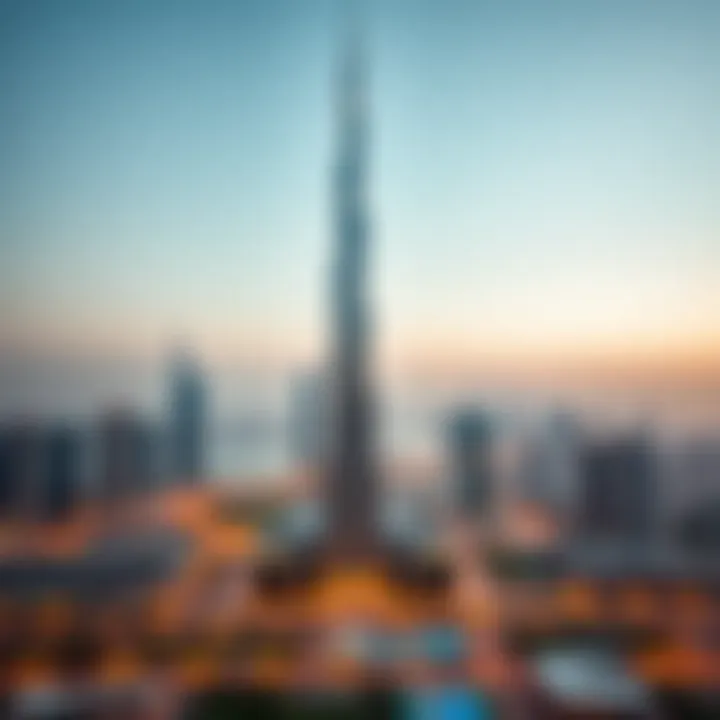
Modernity in architecture often conveys a break from tradition; however, in the case of Al Kubra Tower, this modern ethos marries seamlessly with the cultural context. The tower, with its intricate designs and smart technology, represents a forward-thinking society that values progress while respecting its roots. It stands tall as a beacon of advancement, attracting investors, tourists, and residents alike who seek to be part of a city moving at breakneck speed into the future.
"Al Kubra Tower is more than stone and steel; it's the heartbeat of a culture pulsating with vision and growth."
Artistic Contributions
In terms of artistic endeavors, the Al Kubra Tower has sparked numerous collaborations and initiatives aimed at enriching the cultural tapestry of the region. Not solely a structure for business or residence, it has become a platform for artistic expressions. Its façade often serves as a canvas for light installations and digital art exhibitions that resonate through the community, turning the tower into a living gallery that fosters local talent and invites international artists to showcase their work.
Moreover, the tower is strategically located near cultural institutions such as the Dubai Opera and various art galleries, creating a vibrant nexus for creativity. Such proximity fosters a space where art and architecture intertwine, enhancing the public’s cultural experience and encouraging a dialogue between the past and the ever-evolving present.
As urban planners and artists collaborate on projects surrounding the tower, they contribute to a broader collection of public art that reflects the diversity and dynamism of the Emirate’s populace. The Al Kubra Tower, therefore, is not just a landmark; it is a cultural canvas, a testament to the narrative of Dubai that continues to unfold day by day.
Through these artistic contributions, the tower uplifts not only its immediate area but also enriches the cultural landscape of Dubai as a whole, solidifying its role in the ongoing story of this vibrant city.
Impact on Dubai's Skyline
The Impact on Dubai's Skyline is not merely about the physical presence of Al Kubra Tower; it encompasses a richer narrative about the evolution of urban identity, social dynamics, and economic proclivity in one of the fastest-growing cities in the world. Since its inception, the tower has become a beacon of modern architecture, redefining not only the silhouette of the skyline but also influencing the socio-economic landscape of Dubai.
Comparative Analysis of Landmark Towers
When analyzing the towers that punctuate Dubai's skyline, Al Kubra Tower holds a significant position alongside the likes of the Burj Khalifa, the Emirates Towers, and the Jumeirah Beach Hotel. Each structure tells its unique story; yet it’s fascinating how they interact with one another to create a cohesive architectural dialogue.
- Burj Khalifa: While the Burj Khalifa is recognized as the tallest building in the world, Al Kubra Tower serves a different purpose. Instead of vertical extremity, it focuses on a style that combines modernity with cultural heritage.
- Emirates Towers: The Emirates Towers embody a modern sleekness that is mirrored in Al Kubra Tower's design. However, the latter adds cultural nuances which resonate with the local populace, promoting a connection beyond mere aesthetics.
- Jumeirah Beach Hotel: In contrast to the fluidity of the Jumeirah Beach Hotel's sail-shaped design, Al Kubra Tower presents a more robust structure. This palatable blend of styles ensures the skyline is varied, representing the juxtaposition of the old and new.
In essence, Al Kubra Tower does not host the tallest point in Dubai, but it carves a unique niche within the skyline, enhancing the city's character in the process.
Aesthetic Integration
Aesthetic integration stands as a fundamental element in the evaluation of Al Kubra Tower’s contribution to the skyline. The design of the tower seamlessly aligns with the surrounding urban fabric while engaging the senses.
- Visual Cohesion: The exterior of Al Kubra is ensconced in glass and steel that reflects the sun's rays, harmonizing with the nearby structures. Its lines and shapes blend into the skyline without overpowering, speaking to a design ethos rooted in balance and harmony.
- Landscaping: Surrounding commercial spaces and parks complement the tower’s architecture, creating a welcoming atmosphere for both locals and visitors. This integration sets forth a visual narrative that showcases the city’s finesse in urban planning.
- Cultural References: Unlike many modern skyscrapers that strip away cultural significance, Al Kubra incorporates motifs and elements representative of Emirati culture into its design. This aspect enhances not only the visual appeal but also fosters a sense of belonging and pride among the citizens.
In summary, Al Kubra Tower proves its worth in Dubai's skyline through its thoughtful integration of aesthetics, contributing not just as a physical structure, but as a symbol of the city's evolution. Amidst an ever-changing urban landscape, it remains a canvas upon which the story of Dubai is painted.
Real Estate Market Influence
The impact of Al Kubra Tower on Dubai's real estate market is multi-faceted and deeply intricate. This tower, emblematic of the rapid urban development in the emirate, has attracted attention not just for its architectural grandeur but also for its market standing. Understanding its influence on the real estate sector is pivotal for investors, real estate agents, and potential buyers seeking to navigate Dubai’s ever-evolving landscape.
Investment Potential
Investment potential surrounding Al Kubra Tower is compelling. The property serves as a beacon for both local and international investors due to its strategic location and modern amenities. Investors are drawn to the tower because it stands at the intersection of innovation and tradition, appealing to diverse demographics ranging from expatriates to business magnates.
- High Demand: The steady influx of expatriates into Dubai creates a vibrant rental market, placing Al Kubra Tower as a prime choice for those seeking quality housing.
- Potential Returns: Properties in close proximity to such iconic structures often witness substantial appreciation in value. The prospective return on investment (ROI) is attractive, especially for investors who understand the trends shaping Dubai’s market.
- Unique Offerings: Al Kubra Tower boasts features like mixed-use spaces and luxury amenities, making it an appealing investment avenue. Many investors see the tower not just as a residence but as a strategic business hub.
Market Trends
The market trends associated with Al Kubra Tower reflect broader patterns within Dubai’s real estate sector. Observing these trends allows investors to make informed decisions regarding their investments.
- Rise in Prices: Over the past few years, property prices throughout the UAE have seen a significant ascension, particularly in areas featuring landmark buildings like Al Kubra Tower. The tower’s specifications align well with the increasing demands from buyers who view real estate as a scarce commodity.
- Shift in Demand: There is a noticeable shift towards sustainable living and integrated commercial zones. With Al Kubra Tower's design prioritizing eco-friendly materials and modern amenities, it captures the attention of environmentally conscious buyers.
- Expatriate Influence: The expat community continues to play a vital role in driving market trends. The tower’s location makes it a magnet for expatriates looking to find homes that balance luxury with accessibility to work and leisure.
Buyer Insights
For buyers contemplating a purchase in Al Kubra Tower, insights into their behavior and preferences are crucial.
- Diverse Buyer Profile: The buyer demographic ranges from young professionals to families and individual investors. Understanding what this varied audience seeks—such as community, proximity to workplaces, or investment opportunities—can provide significant leverage.
- Prioritization of Lifestyle: Many buyers are increasingly prioritizing lifestyle-oriented amenities. Features such as state-of-the-art fitness centers, proximity to retail outlets, and communal spaces enhance the living experience in Al Kubra Tower, making it more appealing.
- Focus on Technology: Advanced technological integrations in security systems and smart home features are pivotal in generating buyer interest. Buyers are keen on properties that offer convenience and safety, which Al Kubra Tower thoughtfully incorporates.
The intricate dynamics of Al Kubra Tower within the real estate market highlight its significant role in shaping Dubai’s urban landscape.
Challenges and Critiques
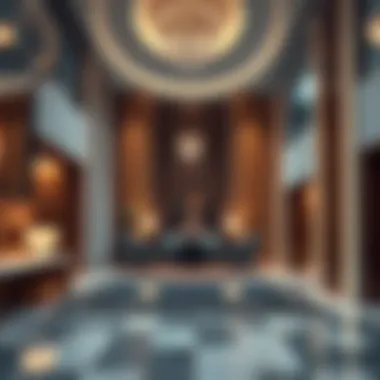
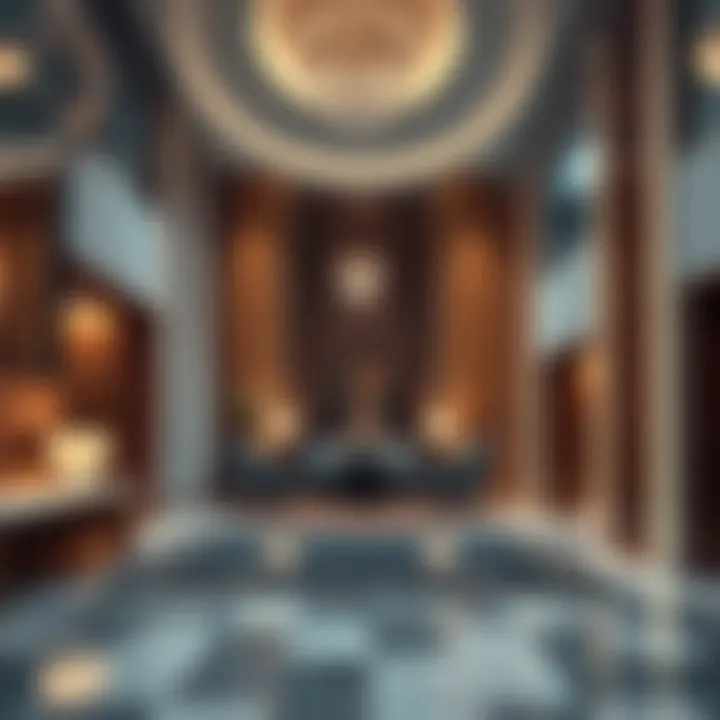
Understanding the challenges and critiques surrounding Al Kubra Tower provides a nuanced perspective on its significance in Dubai. While the skyline it contributes to may inspire awe, the tower is not without its controversies. Addressing these issues reveals insights into the dynamics of architectural ambition and real estate market functioning in a rapidly changing urban environment.
Financial Obstacles
Behind the facade of opulence lies a complex financial landscape that could raise eyebrows. The cost of constructing Al Kubra Tower was astronomical, involving investments in cutting-edge materials and innovative design elements. High financing can strain developers, especially during fluctuating economic conditions.
Many investors might find themselves caught between sky-high aspirations and the practicalities of budgeting. The tower faced significant hurdles during its financing stages, often leading to delays in its completion timeline. Some investors worried whether the projected return on investment could ever materialize, especially during downturns in tourism and real estate markets.
Choosing to fund ambitious projects like this requires a firm grasp of market realities and an appetite for risk
Thus, financial obstacles such as soaring construction costs and fluctuating economic conditions have brought forth skepticism regarding the viability of such landmark developments. This leads us to the larger question: Can a balance be struck between architectural grandeur and fiscal responsibility in similar future projects?
Social Implications
The social consequences of Al Kubra Tower’s presence cannot be overlooked. As much as the tower symbolizes innovation, it also contributes to shifts in the socio-economic fabric of Dubai. The influx of luxury living spaces inevitably influences community dynamics, often exacerbating social divides.
With its towering structure, Al Kubra might attract affluent residents and investors while rendering affordable housing options scarce. Gentrification is a concern, as established neighborhoods can face rising property values and demographical changes that push long-time residents out.
Furthermore, the contrast between the tower's luxury and surrounding less affluent areas may lead to perceptions of exclusivity and inequality.
“As we gaze up at the splendor of Al Kubra Tower, we must also remember the tangible social impacts it has on the surrounding community.”
Thus, while the structure may add aesthetic value to Dubai's skyline, its sociocultural ramifications deserve equal scrutiny. Developers and policymakers alike must take heed of these implications so that future projects work harmoniously within the diverse tapestry of the city.
In summary, examining both financial and social challenges surrounding Al Kubra Tower provides valuable insights. It reminds stakeholders of the need for a holistic approach to urban development, balancing ambition with responsibility. Addressing these challenges could unlock a path toward sustainable urban growth, where architectural marvels contribute positively to life in the city rather than merely standing as monuments of individual success.
Future Prospects
In the rapidly evolving landscape of Dubai, the future of the Al Kubra Tower promises to be a critical aspect of its skyline. This section not only reflects on the immediate plans for development but also considers how the tower fits into the long-term vision for the city's urban growth. As Dubai aims to bolster its position as a leading global hub, the Al Kubra Tower is poised to play a pivotal role in this journey, embodying innovation and architectural elegance.
Upcoming Developments
The trajectory of Al Kubra Tower showcases a blend of ambition and practical foresight. Currently, several enhancements are underway to modernize the facilities and enrich the visitor experience. The developers have outlined comprehensive plans that encompass:
- Smart Building Technologies: Integration of the latest tech innovations is a key focus. Smart security systems, energy-efficient systems, and high-tech communication networks will not only improve safety but also offer unparalleled convenience.
- Cultural Spaces: Plans are in place to develop galleries and exhibition spaces. This will allow the tower to host cultural showcases that celebrate regional heritage and art, turning the building into a cultural epicenter in addition to its urban significance.
- Green Spaces: Taking into account sustainability, future developments may also include landscaped areas. Green roofs and vertical gardens are in the conversation, providing residents and tourists a breath of fresh air amidst the bustling city environment.
These planned upgrades will not only elevate the experience of the tower but will also boost its appeal as a prominent address for both residents and businesses. The expectation is that by enhancing Al Kubra Tower, it will stand as a beacon of growth and innovation, attracting both local and international investments.
Long-term Urban Planning
As Dubai continues to expand and develop, the Al Kubra Tower will no doubt be integrated into the city’s broader urban planning frameworks. The city officials are focusing on multi-faceted approaches that encompass:
- Infrastructure Growth: The integration of transport links is crucial. Enhancements to public transport, including direct metro links and improved roads, will facilitate ease of access to the tower, making it a preferred destination.
- Mixed-use Development: There is a notable shift towards mixed-use spaces. The government encourages developments that combine residential, commercial, and recreational facilities. The Al Kubra Tower, with its strategic location, is likely to become a hub that embodies this philosophy.
- Sustainable Practices: Urban planning is increasingly focusing on sustainability. This includes using eco-friendly materials and construction practices in any future development plans around the tower. Such initiatives will contribute to reducing the city’s carbon footprint and enhancing urban livability.
"The vision for Al Kubra Tower aligns with Dubai’s strategic objectives, promising not only growth for investors but also a quality experience for residents."
In summary, the future prospects for the Al Kubra Tower are shining bright. With careful consideration of modern developments and urban planning strategies, this landmark tower is set to remain a keystone of Dubai's architectural and cultural landscape for years to come.
Finale
In the realm of architectural discourse, the conclusion drawn about Al Kubra Tower holds significant weight. This structure is not merely another skyscraper in the bustling panorama of Dubai; it embodies a confluence of history, modern design, and economic potential. The analysis of this tower offers insights that go beyond bricks and mortar, touching upon the very essence of urban evolution.
One must acknowledge the multifaceted role of Al Kubra Tower within the cityscape. As a landmark of architectural significance, it serves as a physical representation of Dubai’s ambitious spirit. The tower stands as a testament to the city's commitment to progress while maintaining cultural relevance.
The benefits of understanding the architectural merits of Al Kubra Tower extend to various stakeholders in the real estate market.
- Investors can gauge the long-term value derived from iconic structures that drive market dynamics.
- Real estate agents find themselves equipped with knowledge that allows them to capitalize on buyers' interests in unique, culturally rich properties.
- Buyers gain insights into not only the aesthetic but also the societal significance imparted by possessing such a landmark.
- Urban planners can utilize this knowledge for future developments, ensuring that urban growth respects and reflects the cultural ethos of the city.
Critically, the sociopolitical implications of Al Kubra Tower cannot be overlooked. The structure acts as a bellwether of Dubai's global standing, echoing the aspirations of a society in constant flux. Moreover, it showcases how architecture can serve as a bridge connecting diverse cultures in an increasingly globalized world. As the landscape continues to evolve, Al Kubra Tower remains a symbol of ambitions yet to be realized, and the narrative unfolding around it will dictate future interpretations of urbanism in the UAE.
As we step back and consider all discussed elements, it becomes clear that Al Kubra Tower is a microcosm of larger trends at play in Dubai's ever-changing skyline. It challenges us to reflect on our shared urban future and how landmarks like this can inform, inspire, and influence for generations to come.
"In every city, there are stories written in stone; Al Kubra Tower is but a chapter in Dubai's unfolding tale."
In the end, understanding the intricate layers of Al Kubra Tower is not only an academic endeavor but also a practical one, yielding insights that resonate across multiple facets of society. Whether one is drawn to its design, its cultural symbolism, or its impact on the investment realm, what remains clear is its indelible role in defining Dubai's identity on the global stage.
For further elaboration, resources such as Wikipedia and Britannica provide complementary perspectives that enrich this discussion.



